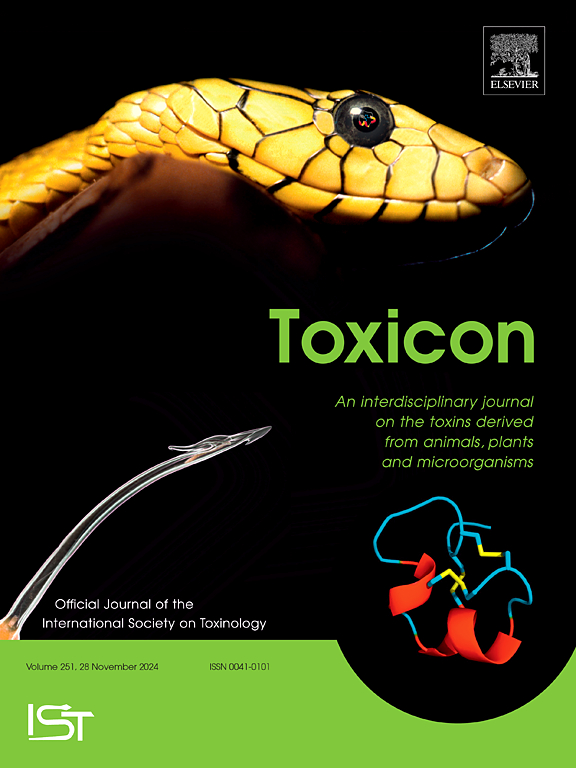Production and characterization of pertussis toxin specific monoclonal and polyclonal antibodies: Implication for toxin purification and detection
IF 2.6
4区 医学
Q2 PHARMACOLOGY & PHARMACY
引用次数: 0
Abstract
Background
Pertussis is a pulmonary disease caused by the gram-negative bacteria Bordetella pertussis (BP) with a high fatality rate among newborns and young children. Pertussis toxin (PT) is essential for pertussis pathogenesis as well as production of acellular pertussis vaccines (aPV). Traditional PT purification procedures are laborious and yield low purity and recovery rates. Also, due to the low production levels of PT by BP and the difficulties of purification, an appropriate immunoassay is needed to monitor PT concentrations upstream and downstream of the production process. This study investigates production and application of monoclonal and polyclonal antibodies for efficient PT purification and quantification.
Methods
Rabbits and mice were immunized with native PT to produce polyclonal and monoclonal antibodies (MAbs). The MAbs were selected based on affinity, isotype and specificity, as determined by enzyme-linked immunosorbent assay (ELISA) and immunoblotting. The native PT antigen was purified using an immunoaffinity column. The purity and recovery rates of native PT were analyzed by ELISA, SDS-PAGE, and immunoblotting. Additionally, monoclonal and polyclonal antibodies were used to establish an ELISA assay for measurement of PT concentration.
Results
A highly pure PT with recovery rates of around 74 ± 4.9 % was obtained following purification by immunoaffinity column, using polyclonal antibodies. Furthermore, the designed ELISA demonstrated suitable reactivity for measurement of the PT antigen.
Conclusion
Our results indicate suitability of the produced monoclonal and polyclonal anti-PT antibodies for purification and monitoring of PT by immunoaffinity chromatography and ELISA, respectively. The immunoaffinity method offers an efficient replacement for PT purification in the context of developing aPV.

百日咳毒素特异性单克隆和多克隆抗体的制备和鉴定:毒素纯化和检测的意义。
背景:百日咳是一种由革兰氏阴性细菌百日咳博德tella Pertussis (BP)引起的肺部疾病,在新生儿和幼儿中具有很高的致死率。百日咳毒素(PT)是百日咳发病和生产无细胞百日咳疫苗(aPV)所必需的。传统的铂净化程序是费力的,产生低纯度和回收率。此外,由于BP生产PT的水平较低且纯化困难,需要适当的免疫测定来监测生产过程的上游和下游PT浓度。本研究探讨了单克隆和多克隆抗体的制备和应用,用于高效的PT纯化和定量。方法:用天然PT免疫家兔和小鼠,制备多克隆和单克隆抗体(mab)。通过酶联免疫吸附试验(ELISA)和免疫印迹检测,根据亲和力、同型和特异性选择单克隆抗体。采用免疫亲和柱纯化天然PT抗原。采用ELISA、SDS-PAGE和免疫印迹法分析天然PT的纯度和回收率。此外,单克隆抗体和多克隆抗体建立了测定PT浓度的ELISA方法。结果:经免疫亲和柱纯化,获得高纯度PT,回收率约为74±4.9%。此外,所设计的酶联免疫吸附试验对检测PT抗原具有良好的反应性。结论:制备的单克隆和多克隆抗PT抗体分别适用于PT的免疫亲和层析纯化和ELISA检测。免疫亲和法为aPV的发展提供了一种有效的PT纯化替代方法。
本文章由计算机程序翻译,如有差异,请以英文原文为准。
求助全文
约1分钟内获得全文
求助全文
来源期刊

Toxicon
医学-毒理学
CiteScore
4.80
自引率
10.70%
发文量
358
审稿时长
68 days
期刊介绍:
Toxicon has an open access mirror Toxicon: X, sharing the same aims and scope, editorial team, submission system and rigorous peer review. An introductory offer Toxicon: X - full waiver of the Open Access fee.
Toxicon''s "aims and scope" are to publish:
-articles containing the results of original research on problems related to toxins derived from animals, plants and microorganisms
-papers on novel findings related to the chemical, pharmacological, toxicological, and immunological properties of natural toxins
-molecular biological studies of toxins and other genes from poisonous and venomous organisms that advance understanding of the role or function of toxins
-clinical observations on poisoning and envenoming where a new therapeutic principle has been proposed or a decidedly superior clinical result has been obtained.
-material on the use of toxins as tools in studying biological processes and material on subjects related to venom and antivenom problems.
-articles on the translational application of toxins, for example as drugs and insecticides
-epidemiological studies on envenoming or poisoning, so long as they highlight a previously unrecognised medical problem or provide insight into the prevention or medical treatment of envenoming or poisoning. Retrospective surveys of hospital records, especially those lacking species identification, will not be considered for publication. Properly designed prospective community-based surveys are strongly encouraged.
-articles describing well-known activities of venoms, such as antibacterial, anticancer, and analgesic activities of arachnid venoms, without any attempt to define the mechanism of action or purify the active component, will not be considered for publication in Toxicon.
-review articles on problems related to toxinology.
To encourage the exchange of ideas, sections of the journal may be devoted to Short Communications, Letters to the Editor and activities of the affiliated societies.
 求助内容:
求助内容: 应助结果提醒方式:
应助结果提醒方式:


